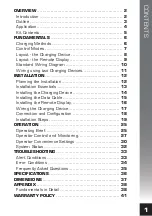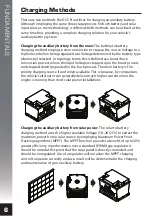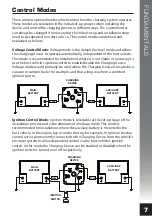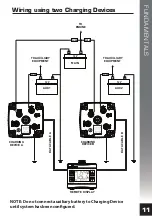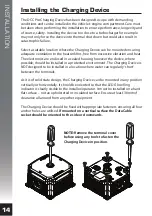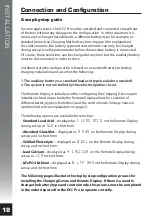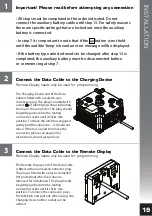
FUNDAMENTALS
6
Charging Methods
There are two methods the DCC Pro utilises for charging an auxiliary battery.
Although employing the same three stage process for both battery and solar
input sources, the methodology is different. Both methods can be utilised at the
same time thus providing a complete charging solution for your vehicle’s
auxiliary battery system.
Charging the auxiliary battery from the main:
The battery to battery
charging method employs power conversion to step up the source Voltage to a
higher level before being regulated at a Voltage determined by the battery type
(chemistry) selected. In topology terms, this is defined as a boost/buck
conversion process where the input Voltage is stepped up in the boost process
and stepped down (regulated) in the buck process. The main battery is the
priority charging source if and when available. This is because, by comparison,
the vehicle’s alternator can generally deliver much higher current when the
engine is running than most solar power installations.
Charging the auxiliary battery from solar power:
The solar to battery
charging method uses the higher available Voltage (18–28 OCV) to extract the
maximum power from a solar source by employing Maximum Power Point
Tracking algorithms (MPPT). The MPPT function provides a benefit of up to 30%
greater efficiency in performance over a standard (PWM) type regulator. It
should be noted at this point that the solar panel is directly connected and
should be unregulated. Use of a regulator will not allow the MPPT charging
control to operate correctly and as a result will be detrimental to the charging
and maintenance of your auxiliary battery.



